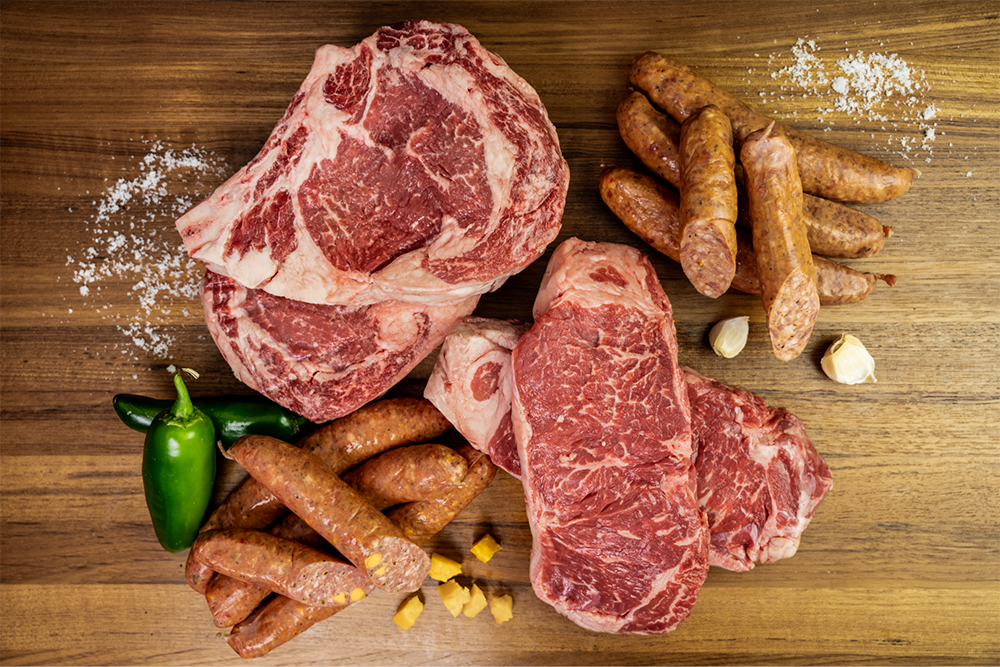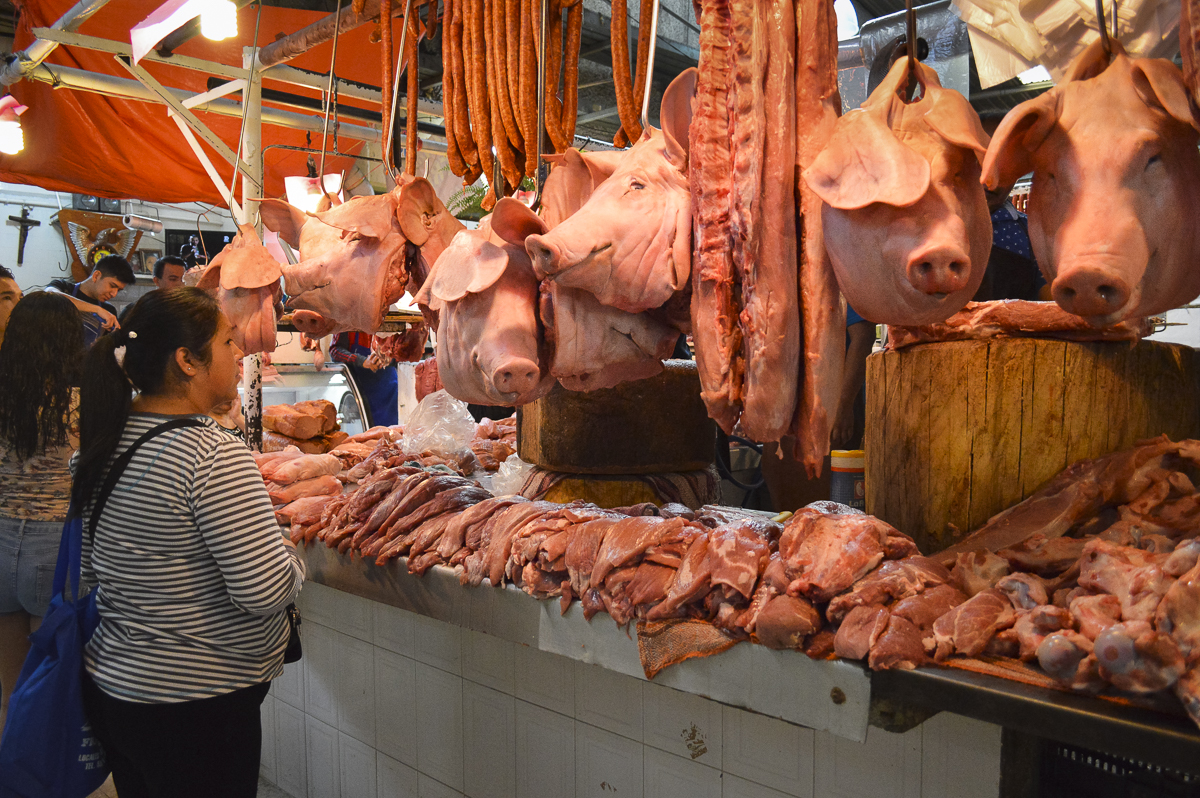Discover the Art of the Butcher's Cut in a Modern Meat Market
In the ever-evolving landscape of contemporary meat markets, the butcher's cut has actually transcended its typical roots, combining olden craftsmanship with modern practices. What absolutely establishes the modern butcher apart is their capability to forge a much deeper connection in between customers and the origins of their meat.
Advancement of Butchery Methods

The mid-20th century saw butchery techniques even more refined by scientific insights into muscle biology and meat aging, enhancing both tenderness and preference. Technologies like vacuum cleaner product packaging and refrigeration expanded item shelf-life, enabling butchers to branch out offerings and improve quality assurance. This duration likewise marked the surge of customized devices, such as band saws and meat slicers, which enhanced precision and performance in meat processing.
Computerized systems currently aid in monitoring animal provenance and enhancing cuts to fulfill particular consumer preferences. In addition, a revival in artisanal butchery has actually emerged, blending typical skills with contemporary knowledge to provide to customers seeking honest and lasting meat choices.

Recognizing Meat Cuts

Comprehending the complexities of meat cuts is necessary for both butchers and customers seeking high quality and value. Each cut comes from a different part of the pet, presenting one-of-a-kind tastes, structures, and food preparation techniques. Mastery of these differences not only boosts cooking experiences yet additionally makes the most of the energy of each carcass. For butchers, specific cuts mirror ability and regard for the craft, making sure very little waste and ideal yield.
The key classifications of meat cuts include primitive, sub-primal, and retail cuts. Butchers after that damage these down even more right into sub-primal cuts, before ultimately producing retail cuts readily available to consumers, like ribeye or tenderloin.
Comprehending muscular tissue structure is crucial; muscle mass made use of much more regularly by the pet have a tendency to be harder and are best matched for slow cooking techniques, while less-used muscular tissues, like those found in the loin, are extra tender and ideal for barbecuing or roasting. Knowledge with these distinctions equips customers to make enlightened choices, improving their cooking undertakings.
Picking Top Quality Meat
Picking the appropriate meat involves more than just picking an aesthetically enticing item from the display screen. The art of picking top quality meat calls for a critical eye and expertise of details features that indicate freshness and excellence. Firstly, focus on the shade; beef needs to have an intense, cherry-red color, while lamb must display a soft pink tone, and pork a pale pink. This indicates the meat is fresh and hasn't been revealed to oxygen for also lengthy.
Second of all, think about the marbling, which refers to the white streaks of fat within the muscle mass. Proper marbling is a key indication of tenderness and taste, as it melts during food preparation, improving the meat's juiciness. Remember, greater marbling commonly associates with superior high quality cuts, such as USDA Prime.
Texture is an additional vital factor; meat must feel firm to the touch, not slimed or excessively soft. In addition, bear in mind the scent. Fresh meat their explanation needs to have a clean, neutral smell, without any type of sour or repulsive odors.
Coupling Cuts With Cooking Approaches
Effectively coupling cuts of meat with the suitable food preparation techniques is essential for attaining ideal flavor and appearance. Different cuts differ in tenderness, marbling, and connective cells material, each requiring details methods to unlock their capacity. Tender cuts like filet mignon and ribeye, with their fundamental marbling, advantage from high-heat, quick-cooking techniques such as barbecuing or pan-searing. These techniques boost the meat's natural flavors and Home Page make certain a juicy finish.
Conversely, tougher cuts like brisket and chuck roast are rich in collagen, which damages down right into gelatin when prepared slowly. These cuts are optimal for braising or slow roasting, permitting the meat to soften over time and develop deep, complicated flavors. Likewise, cuts such as brief ribs and pork shoulder prosper with slow-cooking methods, where prolonged cooking times change their robust textures into succulent dishes.
Lamb shanks and oxtail, which call for extended cooking to tenderize, are perfect prospects for cooking or sluggish simmering. These techniques coax out rich, hearty tastes while preserving wetness. By understanding the unique characteristics of each cut, cooks and home chefs alike can elevate their cooking productions, making sure each meal is both satisfying and remarkable.
The Butcher's Function Today
Browsing the developing landscape of the modern-day meat market, the butcher's role today expands beyond plain preparation of cuts. Contemporary butchers are cooking artisans, instructors, and advocates for lasting practices.
In enhancement to crafting accurate cuts, butchers currently engage straight with consumers, using cooking guidance and customizing selections to match individual requirements and choices. Their competence in meat aging, marbling, and taste profiles encourages consumers to make enlightened decisions, boosting their culinary experiences. This tailored service exhibits the butcher's developing role as a relied on advisor in the cooking area.
Furthermore, butchers are essential in minimizing waste, using entire animals to develop varied items such as sausages and supplies - bagley farms meat market edwardsville il. This extensive technique not just respects the animal however likewise straightens with modern sustainability goals. In this method, the contemporary butcher personifies both tradition and development, adapting to an ever-changing market while protecting the virtuosity and honesty of their craft

Conclusion
The contemporary butcher's craft delicately weaves typical methods with modern advancements, highlighting lasting methods and moral sourcing. Proficiency in understanding varied meat cuts and high quality signs encourages butchers to provide enlightened referrals, aligning specific cuts with ideal cooking methods. This competence not only elevates culinary experiences however additionally enhances the connection in between web link consumers and the beginnings of their food. By recognizing historic methods while accepting contemporary needs, the butcher's duty continues to be crucial in today's sophisticated meat market.